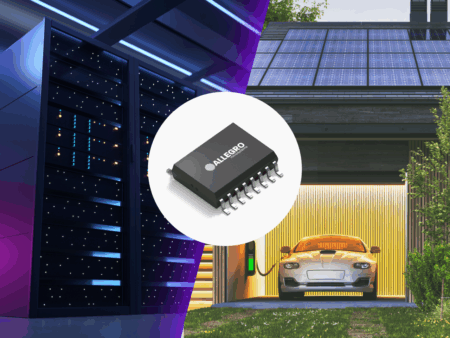From carbon-fiber composites to wide-bandgap semiconductors, manufacturers are shedding pounds without sacrificing performance, safety, or sustainability – transforming everything from battery enclosures to body structures.
Body structures
Lightweighting innovations in body structures typically center on the use of multiple materials. While aluminum can offer weight savings, its stiffness compared to steel means it needs to be implemented with the correct geometry to give it the necessary strength.
William Morgan, Customer Technical Services Manager – Automotive Sector Tata Steel UK says, “We have seen a huge change towards advanced high-strength steels (AHSS) and different steel products from conventional ones to support lightweighting.”
There are several ways steel can be optimized to reduce weight. Morgan says, “Using thinner gauges of steel in non-critical areas can significantly reduce weight without compromising strength.”
Replacing mild steel with high-strength steel also provides weight saving but perhaps one of the most significant advances in this area is tailor welded laser blanks. “This technique can create stronger and more efficient joints in steel structures utilizing multiple grades and sizes in one single component, allowing for thinner and lighter components,” Morgan says. For example, in a door panel ring panel, the steel grade closest to the hinge can be stronger where increased fatigue performance is required, than the material where the door closes where increased formability is required to match the design of the vehicle architecture.
Considering the potential for bio-based composites and particularly their use in motorsports, Peter Quigley, Director at Athena Blue Innovation, says, “One of the advantages of using flax based body panels in GT4 is around health and safety and crash performance.” Unlike carbon fiber panels that become brittle and break into shards, Quigley explains flax based composites experience ductile failures.
Electric motors
Perhaps the most fundamental aspect of lightweighting is selecting the right material or component for the job. For Dr David Moule, Technical Specialist – Electric Drives, Servo Drives Centre of Competence at ZF, sizing the machine for the application is the first approach. “After that, it’s the design optimizations that make sure there isn’t material that doesn’t need to be there.
“Taking an electromagnetic example, looking at a component and seeing if there are bits of a magnetic circuit where there isn’t so much flux going through. At that point you could potentially hollow out those parts of the magnetic circuit and therefore take some weight out.”
Dr Moule suggests another area of consideration is minimizing inactive mass that is not contributing to the torque. He suggests better integration is a good lightweighting method. “If you bring a circuit board very close to a motor you don’t then have lots of housing around the outside that’s taking up space and weight.”
By employing mathematical algorithms or expanding the coverage of one sensor, Dr Moule argues sensor elimination within a product can help to reduce weight and size if its function can be completed elsewise.
In terms of material use, Dr Moule says, “If there is a material that allows you to remove heat from a part of a machine, then that may enable you to have a machine that runs cooler and that might allow you to need less heat sinking somewhere else.”
Thermal management systems
Reducing weight in thermal management systems relies on appropriately designed cooling channels which serve multiple purposes. Thermal properties are the priority but the components that make up these systems can also provide structural integrity or crash protection.
Offering an example of how a lightweight thermal management solution could be implemented, Andrew Halonen, President at Mayflower Consulting explains, “Aluminum extrusion could surround the entire battery pack. What’s important here is that it’s made as one continuous piece. Voids can be used to transfer hot or cold fluid. That’s the beauty of a continuous piece like aluminum extrusion, you get a leak-free path built into your structural part, so it brings a lot of value for structural integrity for torsion and stiffness.
“Hollows in the material are also areas that need to crush and absorb energy. It’s intended to keep that crash energy out of the sensitive battery materials. So, there’s this overall stiffness value, there’s crush energy value and there’s fluid passageway.
“Aluminum has a high conductivity for thermal properties, so it brings a lot of value to battery enclosures, which is why it’s used all over America, Europe and China. It’s a good material for batteries and aluminum is lightweight.”
Battery enclosures
When designing battery enclosures that use composite materials, the composite must be carefully selected to ensure it has the right fire retardancy characteristics. The study titled, ‘A review of advancements in synthesis, manufacturing and properties of environment friendly biobased Polyfurfuryl Alcohol Resin and its Composites,’ argues the search for environmentally friendly and sustainable materials in fibre-reinforced composite material production has led to the use of biobased materials.
“Biomass-derived chemicals, their derivatives, and their applications have become increasingly prevalent in various industries and processes, greatly contributing to the goal of ecological sustainability,” the study states. “The biobased Polyfurfuryl Alcohol (PFA) resin is one of such polymeric materials that is gaining attention for composite applications due to its endearing Fire Smoke and Toxicity properties.”
SGL Carbon claims a battery case which uses carbon fiber-reinforced plastic can be up to 40% lighter compared to aluminum or steel alternatives. The construction of composites means the fiber design inside the material can also be optimized to create the strength needed in certain areas of the component, saving material in the process. This can be thought of as a hybrid material within the composite itself to tailor the component to its use case.

Interior components
No material decisions are made in a vacuum, and there are a number of additional factors to consider in the pursuit of lighter interior components including cost, sustainability, recyclability, texture and appearance. From a weight perspective alone, Halonen says, “As far as taking weight out of plastic, it’s really hard [because] it’s already super light.”
Quigley says, “I think with interiors, one of the biggest drivers is styrene emissions. Another is using the right material in the right place. One of the biggest challenges, especially in plastics, is we use thousands of different grades of plastics.” Having a large number of different types of materials impacts the vehicle’s recyclability.
Comparatively, bio based composites can offer sustainability and marketing benefits. While bio based composites might not have the equivalent strength and performance of non-bio based composites, Quigley argues interior use is ideal for these materials.
In dashboard and trim applications, these composites visibly demonstrate the texture of the biomaterials and allows the higher value material to be on display, as carbon fiber typically is in sports cars, for example.
For components like seats, overmolding can be used to combine the benefits of composites and traditional injection molded thermoplastics. Quigley adds, “What that gives you is the strength, stiffness and form of the composite. But the injection molding allows you to get more intricate features, like stiffening ribs, so localized reinforcement could be mounting features for assembly.”
Power electronics
“When you think of the overall electric drive, one of the areas where there has been new materials used is the wide-bandgap (WBG) semiconductors and the opportunities they offer,” Dr Moule says, “Looking at the controller where the WBG semiconductors can switch a lot faster, that then allows you to reduce the size of passive components: the inductors, the capacitors which you have in the system for local energy storage or for filtering, typically those components can be relatively large.
“If you push up the switching frequencies with silicon carbides (SiC) and gallium nitride (GaN), the WBG semiconductors, the sizes then come down. If the sizes come down it reduces the inactive mass, and the packaging around also reduces, which is great.”
The paper ‘Applications of wide bandgap semiconductors in electric traction drives:
Current trends and future perspectives’ concludes “By leveraging the superior electrical properties, wide bandgap-based traction drives can achieve high switching frequencies, better thermal management, and reduced power dissipation.”
The researchers explain, “The literature review consistently identifies SiC semiconductors as the most preferred WBG device across various inverter configurations, particularly due to their maturity and higher breakdown voltage levels. In contrast, GaN is highly favored in applications involving multi-level inverters.”

Chassis components
Discussing different front upper control arm examples, Halonen says, “The Ford F150’s is two parts welded steel. This is the number one way in the world to make this part, it’s the lowest cost, a little bit heavier, it’s had trillions of miles of success, it’s extremely reliable. The lightest way to do it would be an aluminum forging. This is the lowest weight but higher cost.”
Another way of creating the same component is to use steel stamped components with glass filled nylon insert molding for structural rigidity. This method has been seen in Ram pickup trucks and Tesla vehicles. Halonen explains this combines the low cost of steel with the low weight and strength of the composite.
Emphasizing – which focuses on Enhancing Material Properties of Recycled Glass Fibers Through Sizing – is working on recycling composite materials from the wind energy sector to automotive. The consortium, led by Longworth, aims to introduce reclaimed fibers into automotive production in a low cost, high quality and high yield way.
Longworth’s Deecom method allows resins and fibers from composites to be recovered and used again as virgin materials. While this increases the lifecycles and circularity of composite materials, it can also be used to build a robust supply chain within countries or regions by sourcing and recycling end-of-life wind energy equipment and other used composites.
Wheels
Carbon Revolution claims its carbon fiber wheels are 40% to 50% lighter than comparable aluminium wheels while offering the same strength. Although this is potentially a huge reduction in unsprung mass, the cost of carbon fiber means the wheels will most likely only be used in motorsport or on high-end vehicles.
“If it looks good, do you care as a consumer whether it’s a steel or aluminium wheel?” says Halonen. “It depends on how much they charge on the markup. I think steel and aluminum are going to dominate that space in mainstream vehicles forever.”
Innovations in wheel construction will likely unlock the lightest and cheapest solutions using aluminum alloys. Volkswagen, for example, introduced optional forged wheels weighing just 8kg on the new Golf R model. Compared to equivalent alloy wheels, the forged rims are 20% lighter, demonstrating the potential of alternative manufacturing methods.
“The ambitious weight target posed a major challenge for us, as the structural stability of the wheel rim is paramount,” says Volkswagen designer, Ranbir Kalha. “It took months and many iterations and simulations to find the right balance between strength and weight.”
Wiring harnesses
“We all know aluminum is lighter than copper, but it comes back to specific conductivity, which is where copper wins,” Halonen says. To match the same conductivity makeup as copper, aluminum wire has to be larger. Since wiring is already confined to small spaces, extra diameter can present packaging challenges. If a manufacturer was looking to change wiring from copper to aluminum, Halonen advises planning early in the design process to account for the larger size.
Sumitomo Electrics argues the lower cost of aluminum alone is an incentive for OEMs to make the switch to aluminum wire. Despite the larger gauge required, aluminum is still a lighter option. The metal itself though does not solve the problem since it has a lower strength, develops oxide layers and suffers from galvanic corrosion.
To address the issues with aluminum in this application, Sumitomo Electrics has developed an aluminum alloy for the conductor. At terminals, the company’s system features unique serrations and anti-corrosion technology to ensure the longevity and robustness of the aluminum alloy.
While reducing wiring harness weight may only have a small impact on the vehicle’s total weight, opting for the lighter and cheaper solution could have significant financial implications for mass production.
Glazing
Polycarbonate windows are roughly half the weight of glass, but they do not offer a quick lightweighting option for all applications. Currently, polycarbonate windows see the most use in motorsports where every potential optimization is explored to cut lap times.
While polycarbonate starts out crystal clear, unless it is treated appropriately with advanced coatings, it has poor scratch resistance over time. As a windscreen on a road-going car, the longevity and risk of scratches from regular use of wipers makes polycarbonate an unsuitable solution.
However, for fixed side windows, rear windscreens, sunroofs and panoramic roofs, that are less likely to be scratched, the weight savings could be huge. Again, the right coatings need to be applied to ensure the material’s UV resistance over time to prevent degradation.
Corning’s Gorilla Glass is perhaps the most practical alternative to traditional automotive windows. Its windshields are made of three layers, a soda-lime glass, polyvinyl butyral and Gorilla Glass. For use in windscreens, panoramic roofs and side windows, the solution is up to 30% lighter than conventional glass and up to 50% more durable against sharp and blunt impacts. Gorilla Glass has been used on the Ford GT, Porsche 911 GT2 and GT3 RS, Jeep Gladiator and McLaren 720S.





